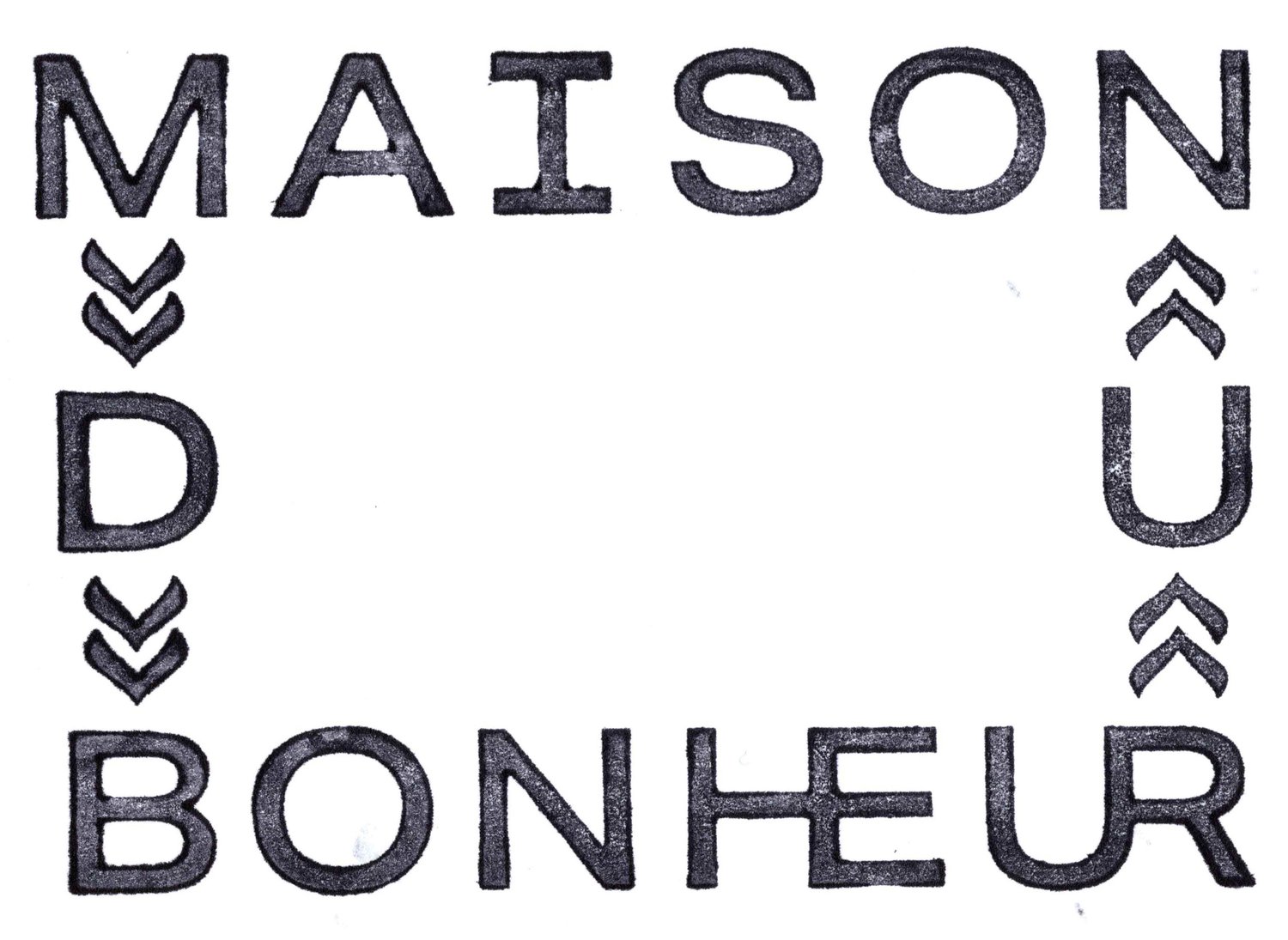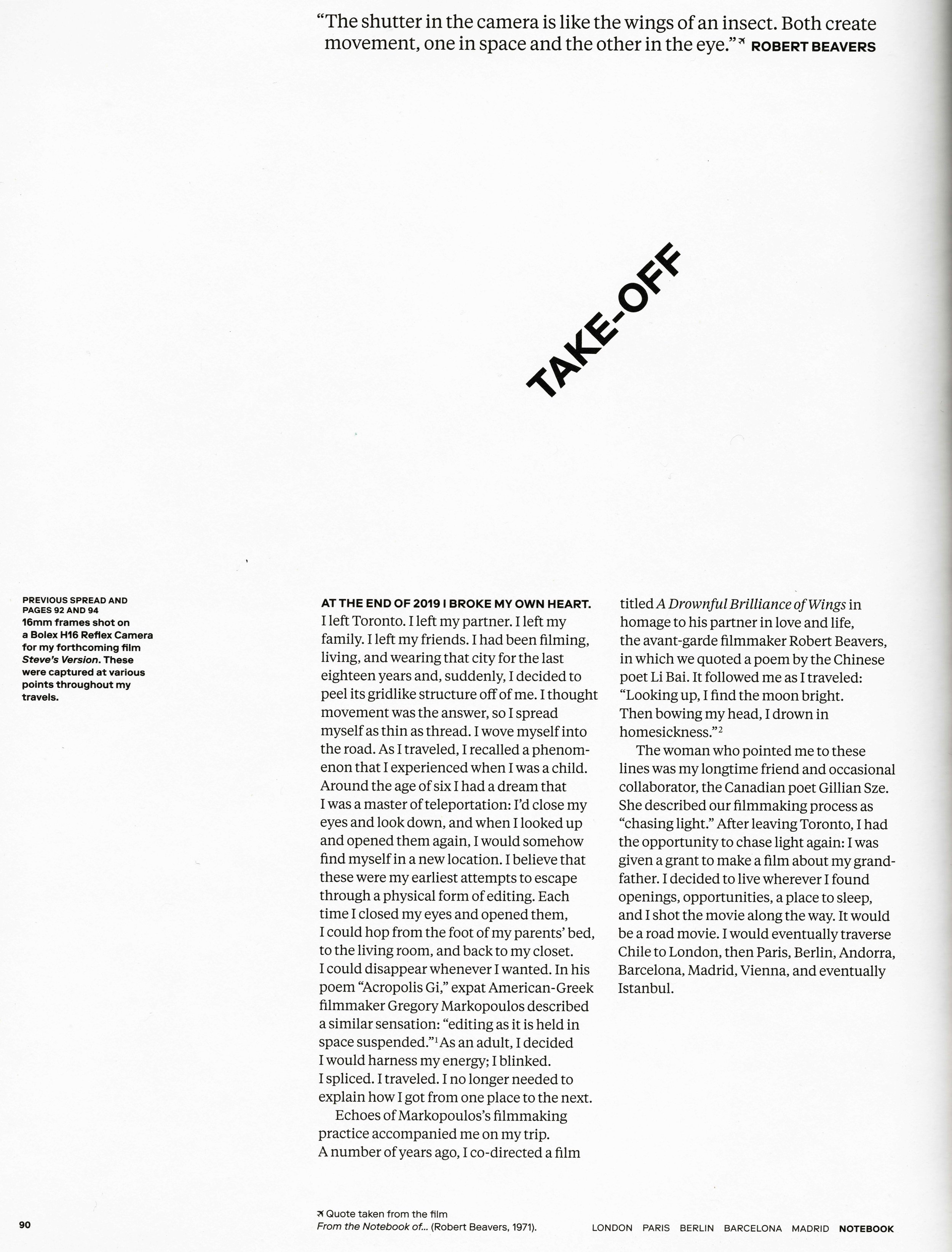Duty of Care: Sarah Friedland on Familiar Touch: Filmmaker Magazine
Sarah Friedland’s Familiar Touch follows Ruth, an octogenarian woman experiencing memory loss as she transitions into assisted living. Played with luminous restraint by Kathleen Chalfant, Ruth is not someone we observe from a distance—we move with her. Told entirely from her perspective, the film unfolds through a sensory experience of time and memory. Through light, texture, sound and gesture, we come to understand what it means to live inside a body—and a mind—that is transforming.
What strikes me most about the film is its sense of space—not only within the frame, but in thought and feeling. The film runs a precise 90 minutes yet unfolds with a gentle expansiveness. Time loops and folds. Audiences are given the chance to reflect, absorb and settle into a world observed with an unrushed gaze free of judgment. The camera reflects this intention. Friedland and cinematographer Gabe Elder kept the lens at Ruth’s eye level, echoing the posture of a care worker kneeling to meet a patient. That height also recalls Ozu, who often framed characters from the seated perspective of someone on a tatami mat—a quiet form of reverence.
“A Medieval Period Piece for Under $200,000”: Caroline Golum on FIDMarseille 2025 Premiere Revelations of Divine Love, Prayer and Process: Filmmaker Magazine
Since watching Revelations of Divine Love—which is making its world premiere at FIDMarseille today—I’ve found myself thinking about its construction, restraint, devotion to form and alarming sincerity. Brimming with the mystery of manifestation, it is a work of sheer will, equal parts spiritual inquiry and cinematic lament. Masterfully lensed by cinematographer Gabe Elder, the light surrounding our heroine, Julian of Norwich (Tessa Strain), is diffused and precise, its textures tangible. I reached out to Caroline Golum because I found myself curious: not just about the film itself, but about her process, commitment, and rigor that shaped it. The film draws from the writing of Julian, a 14th-century mystic who, after falling ill and experiencing divine visions of Christ’s crucifixion, chose to enclose herself in a small room for the rest of her life to write and pray as an anchoress. The film is about the survival of an artist’s spirit and through its movements it becomes a kind of mirror: sincere, strange, detailed and hand-stiched. More than anything the work asks the question: how do we know that we’re enough?
Best of the Decade: Jodie Mack: Cinema Scope
The rigorous and vibrant visual rhythms of Jodie Mack’s cinema were first impressed upon me in 2009, when I premiered a short film at the Ann Arbor Film Festival in a section titled “Feminist Travelogues.” I was fortunate to have been programmed alongside Jodie, who was screening a 28-minute stop-motion animation musical epic titled Yard Work Is Hard Work (2008). During the screening I sat completely dazzled as I watched an intimidating wall of meticulously cut images pulled from catalogues perform intricate designs, which, in combination with acrobatic camera movements and an original soundtrack, told an allegorical story of the disillusionment of married life. I was overcome by the film: I found that it was suffused with an aura of isolation and defeat; it was impressively impenetrable.
Agnès Varda: We Are All Minuscule in the Universe: Mubi Notebook
I remember when I found out that Varda had died, I was on a bus in Iceland. I was working on a friend’s film, aptly titled Geographies of Solitude, up in the north in a town called Blönduós. I moved through ice fields, mountains of minerals and snow drifts. I looked at these barren landscapes and thought about what kind of interior state was being exhibited in the vista before me.
In Varda by Agnès, Varda’s last film, the director states that beaches are a paysage mentale (a landscape of mind). For her, they were a place of inspiration. With Varda, things come in threes. Beaches are composed of the following elements: sky, sand, and sea. Similarly, her filmmaking practice is fueled by three important components: inspiration (the desire to make a film), creation (what the film means, the structure), and sharing (the communion of her work with a larger audience). With these concepts in mind, I began to think further on the function of image books—the gesture of collecting images and structuring them in a particular way in order to project, share, or materialize what dwells in the recesses of our minds.
The Double Life of Juliette Binoche: TIFF - The Review
Thirteen years ago I was studying at the Toronto Film School, and, to be perfectly blunt, it was a terrible experience. I was struggling to find an identity as a filmmaker in an environment that was toxic to my ambitions; despite my best efforts to create a space for the kinds of films I wanted to make, I often felt as if I were trying to sculpt a cement block with a butter knife. It was not an encouraging environment to experiment or explore, as students were expected to aspire to cookie-cutter blockbuster cinema. Anything that deviated from this commercial course was deemed to be a waste of time — I was even told by one teacher that my desire to make experimental films could be compared with masturbation.
Amidst all this, however, were a few teachers who introduced me to new forms of cinema that transformed my practice and reminded me why I wanted to pursue filmmaking in the first place. One of these teachers was Sherry Coman, and it was in her scriptwriting class where I watched my first Kieslowski film, Blue (1993). I was transfixed by the performance of the lead actress Juliette Binoche, who plays a grieving widow whose stone-cold gaze shatters all those who dared meet it; who scrapes her hands against brick walls and struggles to kill a litter of baby rats, yet still moves through the world with a fierce and formidable determination. I was astounded by this internally driven performance that also managed to emit light and subtlety with an elegance that I had never thought possible.
Sofia Bohdanowicz introduces her film ‘Maison du bonheur’: Mubi Notebook
When I showed up to Juliane’s apartment I was nervous, but when I saw her doormat that read “Maison du bonheur,” I was completely disarmed. When she opened the door, she had a beautiful long, bright blue dress on, her hair was curled and pulled into a stunning updo and she welcomed me into her home with a warm smile. Light was beaming into her living room and I couldn’t believe my luck when I saw her fuchsia hydrangeas pouring off of her balconies onto rue Lapeyrère. I threw my bags in my room, Juliane and I exchanged a few words of introduction and then I remember asking if she wouldn’t mind if I began shooting the film right then and there.
In the summer of 2015, everything seemed to line up. I was generously given the month of July off from my employer to spend in France, I was approved for a $10,000 line of credit and the 16mm Bolex that I ordered off of eBay arrived right on time.
Since I was making a film with such limited means, the first thing I realized is that I would likely be working by myself. During the entire month of production, I lived with Juliane. I was keen for us to build a close and comfortable relationship that would result in a film she felt represented her honestly and accurately. I also knew that if I had a massive crew (which I could not afford) hanging around her apartment, it would take much longer for us to build a free-flowing rapport. This intimacy resulted in her generously opening up to share what became key moments in the film: where she spoke of the time she got her driver’s licence when she was six months pregnant, how she almost didn’t get married over a broken nail and why she’s continued to see the same hairstylist for more than 30 years. Since I shot the film alone, the project became something that wasn’t just about Juliane; it evolved into her becoming a collaborator and co-conspirator.











